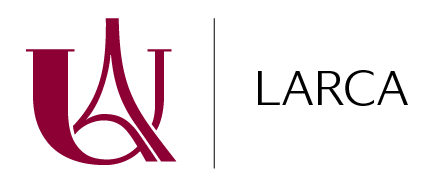Summary
Arts of War and Peace is an open access, peer-reviewed, online journal of the LARCA Laboratoire de Recherche sur les Cultures Anglophones (Research Unit on English Speaking Countries) of the Université Paris Cité (Paris, France) and the CNRS (the french National Center for Scientific Research, France). URL : https://artswarandpeace.univ-paris-diderot.fr/
Next issue is # 5.1 (Semester 1, 2024)
The distinguishing characteristic of this review is our conviction that war and peace are closely interrelated and cannot be studied separately; war and peace often seem to preclude each other, yet in the light of their varying effects and consequences they turn out to be inseparable. One of the problems for conceptualizing peace is that it is often based on the memory of war, and the traces and memories of war are always problematic. Hence the name of the review, Arts of War and Peace, in which “Arts” is an inclusive term denoting any branch of learning and cultural production (music, history, philosophy, literature, etc.) all of which are legitimate objects of our study.
Argument
It has now been a year and 8 months since the Kremlin’s “special military operation,” or invasion of Ukraine was launched in February 2023 with the evident intention of occupying as much of Ukraine as possible and joining that country by force to the union that joins Russia to Belarus. It has been nine years since the Russian annexation of Crimea from Ukraine in 2014. Since 2014 as well, there has been continuous Russian military support of Ukrainian separatists in eastern Ukraine or Donbas. The conflict is much older than those outbreaks of violence and aggression. The formation and dissolution of the Russian Empire followed by the formation and dissolution of the Soviet Union followed by the creation of the Russian Federation and all that in a context of the upheavals caused by invasions from the West, have all seen an ebb and flow of independence and domination in Ukraine. Is this a war without end? Does the unobstructed and rich farmland of Ukraine, or some other feature, make it inevitable that it will attract conflict? How is peace imagined in such a context?
Whenever the forces of one side or the other stop moving forward, commentators of all kinds talk of this conflict as a war of attrition. They talk, in fact, as if only the exhaustion of human and material resources on one side or the other could bring about peace, as if, in other words, the two sides must fight to the last soldier or to the last round of ammunition to see who prevails. That analysis invites calculations and then judgments. It is a simple calculation that
Russia has a population 3.5 times that of Ukraine and started the war with stockpiles of weapons that vastly outnumbered anything Ukraine could muster. The Russian economy is about 3 times the size of Ukraine’s as well. But NATO countries, with the United States foremost, and a determined European Union, have thrown their weight on the Ukrainian side, ramping up the quantity and quality of equipment to more than equal Russia’s and pouring their economic resources into Ukraine as well. And in the early days of the war, Ukrainian pluck and initiative seemed to make a motivated Ukrainian soldier reliably worth far more than a poorly motivated Russian. Someone counting resources on each side to determine who will win, must now count not only the imponderable of Ukrainian v Russian ability soldier by soldier, but also the motivation of the American Congress and the outcomes of EU member elections in a calculation of attrition.
It is the purpose of this issue of Arts of War and Peace to add further to the complexity to these calculations of a prediction based on attrition to in fact circumvent attrition, or fighting to exhaustion, as the default method of arriving at peace and determining a winner. Are there moral calculations to be made? Can the complex historical context be quantified? Can one side or the other exhaust its resources of trust or decency to an extent that might be decisive? Are there cultural calculations to be made? Can the efforts to destroy and repair towns and cultural sites be compared in a meaningful way to see what kind of peace will result? Is there a quality and quantity of cultural representation of this war that can be compared in an attritional calculation? In what ways do United Nations agencies act as score keepers and is that useful? Can the terrible environmental costs of this war in the context of oncoming catastrophic climate change be measured in such a way as to expand the idea of attrition from counting soldiers and munitions? Writing from a western capital these comparisons might seem one sided, but it is hoped here that a sincere effort to quantify the unquantifiable on
both sides of this conflict is possible for a useful result.
Submission guidelines
Authors are invited to submit articles from various theoretical and methodological perspectives, considering different aspects such as History, Literature, all Arts, Poetics, etc.
The journal does not charge for submission or publication and uses a double-blind peer-review system. Texts can be sent in English or French.
Abstracts, (400 words maximum), with a biographical-bibliographical statement, (300 words maximum) for papers of 10 to 20 A4 pages (10,000 to 20,000 words, plus images free of rights and video links ) should be submitted by December 19, 2023 with completed papers sent to us, after acceptation, by March 1, 2024 for blind reader review, and the possibility of author corrections in April 2024.
The Editorial Policy is described here :
https://artswarandpeace.univ-paris-diderot.fr/editorial-policy/
Please send submissions to Mark Meigs: mmddmeigs@gmail.com and to Karl Gosselet:
karl.gosselet@cnrs.fr
